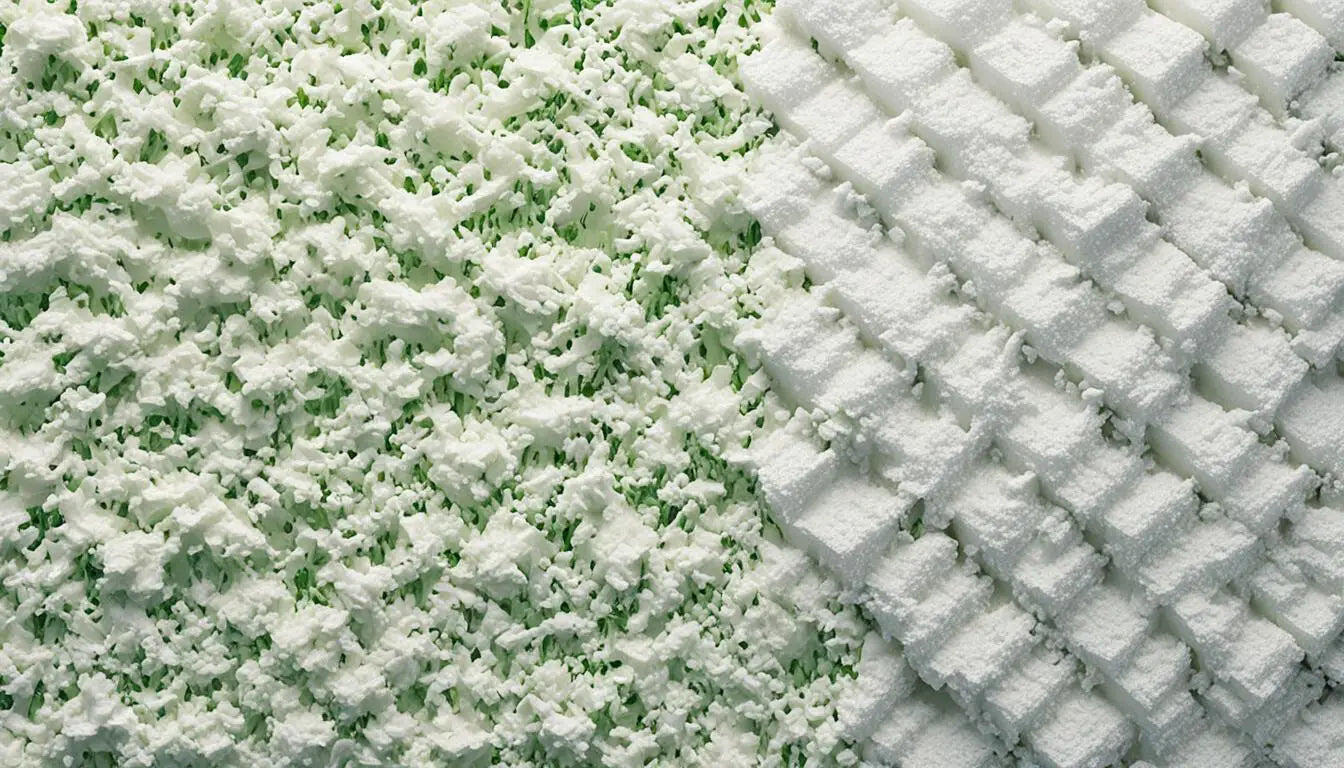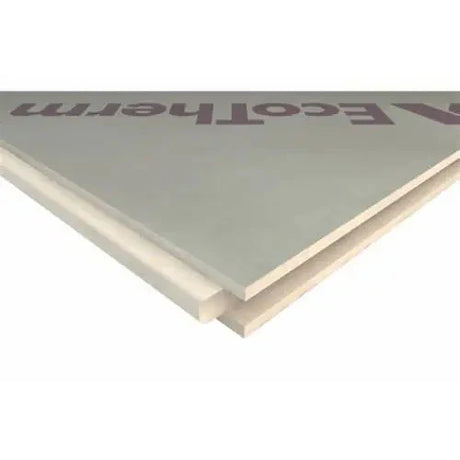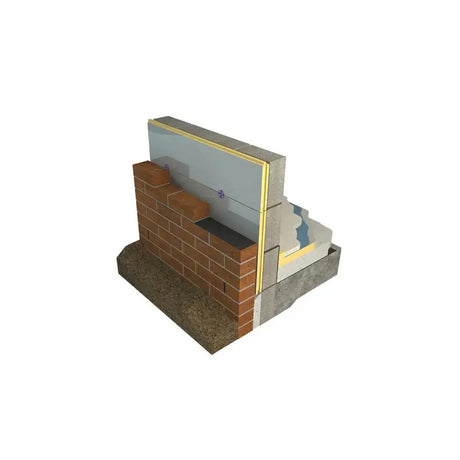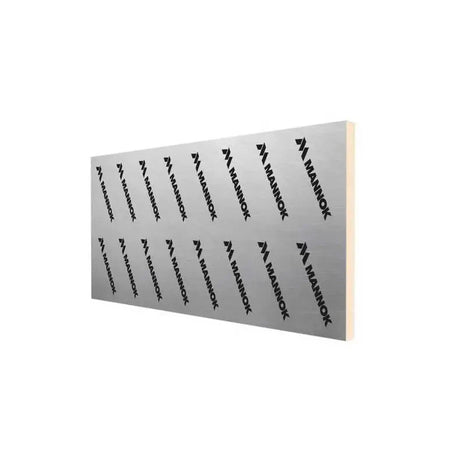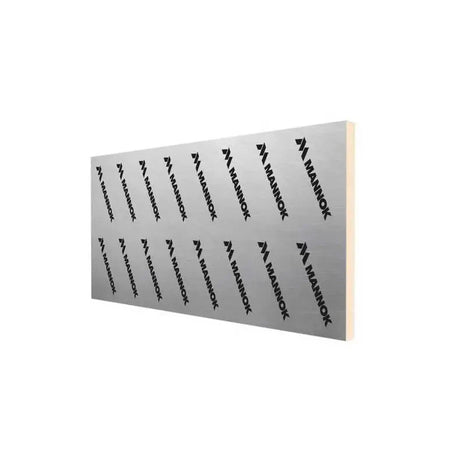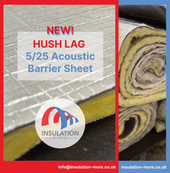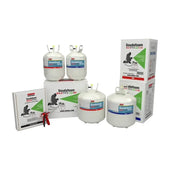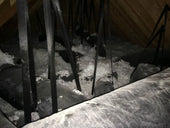Did you know effective insulation can cut your energy bills by up to 40%?
The choice between spray foam and rigid foam board can hugely affect your home's warmth and energy use. Spray foam, which is polyurethane or polyisocyanurate, goes on as a liquid and then expands. Rigid foam boards, made of polystyrene, are simple and quick to set up.
For expert advice on the best foam insulation, talk to specialists like those from Hill Group. They'll consider your budget, how well the insulation should perform, and what your building needs. This helps decide if spray foam or rigid foam is better for you.
Key Takeaways
- Good foam insulation can lower energy bills by up to 40%.
- Spray foam creates a continuous layer that blocks gaps.
- Rigid foam board installation is straightforward and cost-efficient.
- Getting advice from professionals is wise when picking insulation.
- Both types of insulation boost your home's energy efficiency and cosiness.
Introduction to Foam Insulation
Foam insulation plays a key role in improving home energy use. It mainly involves two types: rigid foam board and spray foam. These help keep a steady indoor temperature, making homes cozier. They stop heat from escaping or entering, keeping homes using less energy. This cuts down on heating and cooling costs.
Rigid foam board and spray foam have a high ability to block heat. Their effectiveness is measured in R-values. Meeting the right R-values is crucial for keeping homes energy-smart. It ensures they not only save on energy costs but are also safe and meet building standards.
Understanding R-Value and Its Importance
R-value is crucial for choosing right insulation. It tells us how well insulation stops heat transfer. Knowing this helps pick the best insulation for energy-saving homes. Let's compare spray foam and rigid foam board insulation.
Definition of R-Value
R-value measures insulation's resistance to heat flow. It tells us how insulation keeps indoor temperatures stable. This calculation considers material type, thickness, and density. It is vital for judging insulation's effectiveness.
How R-Value Affects Insulation Performance
Insulation's R-value impacts building energy use. High R-values mean better thermal resistance. This leads to less heat loss in winter and less heat gain in summer. Choosing the right R-value is key for comfort and saving energy.
Comparison of R-Values: Spray Foam vs Rigid Foam Board
Comparing spray foam and rigid foam board shows the difference in performance:
| Insulation Type | Typical R-Value per Inch | Applications |
|---|---|---|
| Spray Foam | 5.5 | Roofing, walls, attics |
| Rigid Foam Board | 3.8 - 5.0 | Basement walls, foundation, exterior applications |
Spray foam insulation has an R-value of about 5.5. Rigid foam board's R-value is between 3.8 and 5.0. Spray foam is better for maximum insulation needs. But rigid foam board is still effective for certain uses.
Knowing R-value's importance aids in choosing insulation. It helps homeowners pick materials that save energy and ensure comfort. This balance between performance and cost creates efficient, comfy homes.
What is Spray Foam Insulation?
Spray foam insulation is a top choice for updating older buildings and building new ones. It comes in two main types: polyurethane and polyisocyanurate. These make buildings warmer and use less energy.
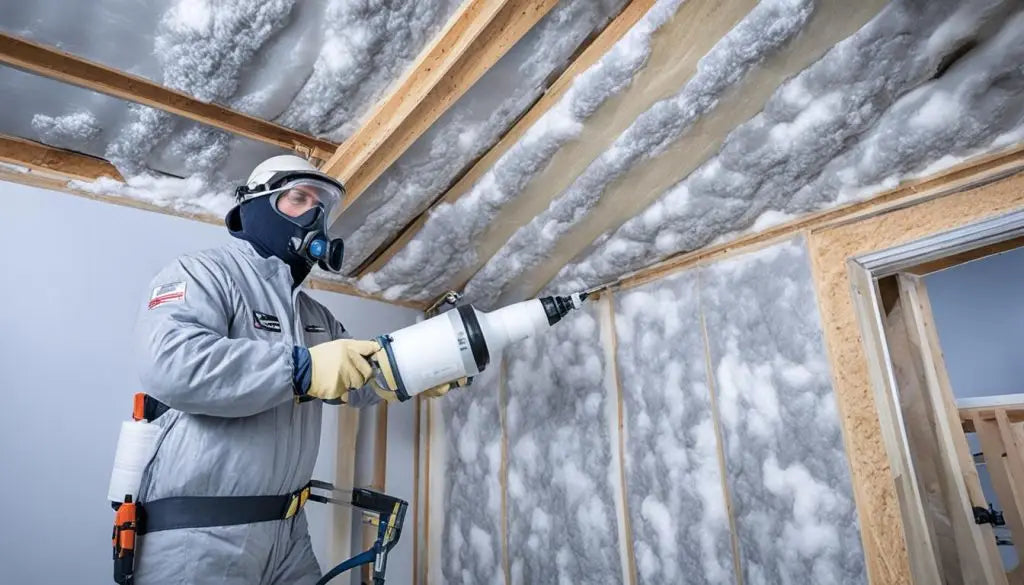
Composition and Types of Spray Foam
Spray foam is mainly made of polyurethane and polyisocyanurate. Polyurethane keeps heat well, with a high R-value. Polyisocyanurate is better at stopping fire and keeps the heat out. When sprayed, both materials fill up cracks fully, stopping heat from escaping.
Application Methods for Spray Foam
To put in spray foam insulation, there are different ways depending on the job size. For small areas, spray cans work well. For big projects, a pressure sprayer is better. This foam fills all spaces completely, making sure insulation is even everywhere.
Benefits of Using Spray Foam Insulation
Spray foam insulation has lots of plus points for old and new buildings. It seals air leaks well as it expands into cracks. It also keeps moisture out, protecting the building's structure. With its high R-value, it cuts down on energy use and makes indoors more comfortable.
What is Rigid Foam Board Insulation?
Rigid foam board insulation is a cost-effective, budget-friendly solution. It provides strong thermal resistance. It is made from materials like polystyrene, polyisocyanurate (polyiso), and polyurethane, offering versatility in projects. A key advantage is its high R-value per inch. This means it meets building codes without making walls thicker. So, it saves space effectively.
Polystyrene insulation is a type of foam board known for its strength and longevity. It is often used in construction to save energy. The material's rigid nature keeps insulation performance steady over time. This ensures the strength of buildings.
Let's compare different materials used in rigid foam board insulation. Each has its benefits:
| Material | R-Value per Inch | Advantages |
|---|---|---|
| Polystyrene (EPS) | 3.6 - 4.0 | Budget-friendly, high moisture resistance |
| Polyisocyanurate (Polyiso) | 6.0 - 6.5 | Best R-value, excellent thermal performance |
| Polyurethane | 5.5 - 6.0 | Great insulation, resists water well |
This overview shows how flexible and effective rigid foam board insulation is. It's a smart choice for those wanting a cost-effective solution. It does not compromise on structure or thermal efficiency.
Energy Efficiency: Spray Foam vs Rigid Foam Board Insulation
Choosing the right insulation is key for energy-efficient homes. It ensures good thermal performance and can save you money over time. Spray foam and rigid foam board each have benefits that lower heating and cooling costs.
Impact on Heating and Cooling Costs
Spray foam usually has an R-value of about 5.5 per inch. This is higher than rigid board's 3.8 to 5.0 per inch. Its high thermal resistance helps cut heating costs in winter and cooling costs in summer.
Spray foam fills gaps well and seals out air, losing less heat. This boosts energy efficiency all year.
Long-Term Energy Savings
Choosing insulation with a higher R-value means more savings down the line. Spray foam lowers the need for heating and cooling. This means you'll spend less on energy each month.
Rigid board insulation might cost less at first. But its slightly lower R-value can mean spending more on energy as time goes by.
Thermal Performance Comparison
Spray foam is often more effective, especially in retrofit projects. It betters the thermal envelope of energy-efficient homes. Rigid foam is best for new builds and is easier on the wallet.
However, it might not fill all voids, leading to thermal bridging. The choice between spray and rigid foam depends on the project's specifics like budget, structure, and needed thermal performance.
Installation Methods: Spray Foam vs Rigid Foam
It's vital to know the differences in installing spray and rigid foam. Each type has its own process that affects how fast and easily it can be installed.
Ease of Installation for Spray Foam
Spray foam is quick to install thanks to its spraying method. It's great for filling in gaps and odd shapes. This makes it perfect for adding insulation to existing buildings or tricky areas.
Steps to Install Rigid Foam Boards
Rigid foam boards need a bit more work to install. You have to cut them to size and fix them in place properly. They must be neatly aligned and sometimes glued together. Doing this right stops heat from escaping and helps with meeting energy-saving rules.
Which Method is Faster?
Spray foam is generally faster to put in than rigid foam boards. Its method of spraying or pouring in place cuts down on installation time. Rigid boards, however, are better for big, flat areas needing constant insulation. They take longer but ensure a solid barrier against heat loss.
Here's a quick look at how spray foam compares to rigid foam:
| Spray Foam | Rigid Foam Board |
|---|---|
| Application through spraying or pouring | Cutting to fit specific measurements |
| Expands to fill gaps | Secured with mechanical fasteners |
| Quick-install insulation solution | Time-consuming but precise fitting |
| Ideal for retrofitting | Effective for continuous surface coverage |
The best choice depends on your project's needs. Think about how quickly you need to install it versus the need for constant heat protection and meeting energy rules.
Cost Analysis of Spray Foam and Rigid Foam Board Insulation
When looking at the insulation cost-effectiveness of spray foam and rigid foam board, various aspects come into play. Spray foam usually costs more at first, as it needs special gear and experts to apply it. On the other hand, rigid foam board is less pricey and simpler to install, which might suit those on a budget for insulation.
Despite its higher initial cost, spray foam insulation brings better R-values and more effective energy savings in the long run. This can help balance out the upfront expense. Whereas, rigid foam board is easier to apply in thicker layers and still offers good insulation expenses savings. Making a choice often involves weighing these initial costs against the potential savings.
| Criteria | Spray Foam | Rigid Foam Board |
|---|---|---|
| Initial Cost | Higher | Lower |
| Installation Complexity | Requires Professionals | DIY-friendly |
| R-Value per Inch | Higher | Moderate |
| Energy Savings | Higher Long-term Savings | Moderate |
Moisture Resistance and Air Sealing Properties
Effective insulation should balance moisture resistance with air sealing. Spray foam and rigid foam board are both good at this. But, they perform differently.
Moisture Blocking Capabilities
Closed-cell spray foam is great at blocking moisture. It's like waterproof insulation, keeping water out. This makes it great for wet areas. It fills gaps well. So, it stops moisture from getting in and harming the structure.
Air Sealing Efficiency
Air leakage prevention is key in insulation too. Closed-cell spray foam is top-notch at sealing, stopping air from escaping. Rigid foam board is also good at this. With proper installation, it prevents a lot of air leakage. This keeps air quality and energy use better.
Below is a table that shows how they compare:
| Insulation Type | Moisture Resistance | Air Sealing Efficiency |
|---|---|---|
| Closed-Cell Spray Foam | High | High |
| Rigid Foam Board | Moderate | Moderate to High |
Sustainability Considerations
Today, making buildings sustainable is crucially important. We have to think about the environment when we pick insulation types. It's key to look at their impact and the benefits they bring in the long run.
Insulation that's good for the planet helps save energy. This means buildings use less power and send fewer harmful gases into the air. Such steps are vital in fighting against climate change. These materials are made to leave a small mark on the earth, from getting the raw stuff to their disposal.
Spray foam insulation seals up homes well, keeping heat in or out. But, making it can involve harmful chemicals that don't break down easily in nature. Meanwhile, rigid foam board insulation is great at keeping heat too. Yet, recycling it can be hard.
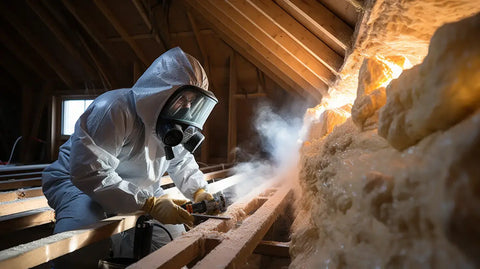
How long insulation lasts also matters for the environment. Materials that don't need to be replaced often save more energy and reduce waste. This helps a lot in keeping our practices green.
At the end of the day, picking the right insulation means looking at its whole life impact. This careful choice helps save energy and lessens damage to our planet.
Applications in Residential Projects
Choosing between spray foam and rigid foam for your home can make a huge difference. Each insulation type has its own benefits for certain needs. Knowing when to use each kind can help you improve your home’s warmth and save money.
Best Uses for Spray Foam Insulation
Spray foam is best for sealing tiny gaps in places like attics and walls. Because it expands, it fills spaces well and stops drafts. Its ability to seal and resist moisture makes homes more energy-efficient.
When to Choose Rigid Foam Board Insulation
Rigid foam is great for areas needing structural strength and simple fitting. It’s often used in basements and outer walls to keep out moisture. With its high R-value, it doesn’t take much space, which is good for following building standards. Quick to install, it’s cost-effective for new buildings and covering big areas.
FAQ
What is the difference between spray foam and rigid foam board insulation?
Spray foam is a liquid that turns into foam, filling gaps for an airtight seal. Rigid foam boards are pre-made panels, attached mechanically. Both types use materials like polyurethane to insulate.
How does the R-value of spray foam compare to rigid foam board insulation?
Spray foam has a higher R-value of about 5.5 per inch, making it better at insulating. However, it's usually more expensive than rigid foam board, which has an R-value between 3.8 and 5.0 per inch.
What are the advantages of using spray foam insulation?
Spray foam excels in air sealing and moisture resistance. It's perfect for filling odd spaces. It works well in new and old projects, providing a barrier against heat loss.
What are the benefits of rigid foam board insulation?
Rigid foam board is affordable and easy to install. It's ideal for places needing structural strength and less space use, like basement walls. It also resists moisture well when sealed.
How does insulation affect heating and cooling costs?
Good insulation keeps heat transfer in check. This means your indoor temperature stays more constant without too much heating or cooling. This way, you save on energy bills.
What is the installation process for spray foam insulation?
To install spray foam, professionals use special equipment to spray a liquid that expands and hardens, filling all spaces. It's a quick method suited for filling awkward gaps.
How is rigid foam board insulation installed?
For rigid foam board, you cut panels to size and fasten them in place. It's a bit slower but gives thorough coverage that stops heat loss well.
Which insulation option is more cost-effective?
Rigid foam board costs less upfront and is easier to install than spray foam. But, spray foam's high R-value might save more money in the long run by lowering energy costs.
How do spray foam and rigid foam board insulation resist moisture and air leakage?
Closed-cell spray foam is dense, stopping moisture and air leaks very well. Rigid foam board also resists moisture, especially if its seams are sealed right to keep air out.
What sustainability factors should be considered when choosing insulation?
Think about how long the insulation lasts, its production impact, and if you can recycle it. Both spray and rigid foam have pros and cons environmentally. Choose what's best for the planet.
When should spray foam insulation be used in residential projects?
Use spray foam for homes in need of tight insulation, in hard-to-reach spots, or with odd shapes. It's great for updating older homes to be more energy-efficient and warm.
When is rigid foam board insulation the better choice?
Rigid foam board is better for ensuring buildings stay strong, like in basements. If you're watching your budget but need good insulation, it's a smart pick.
Can you provide examples of successful residential applications using spray or rigid foam insulation?
Success stories include spray foam for attics to cut energy use and improve comfort. Rigid foam is great for basements, keeping them dry and well-insulated. These examples help homeowners decide.

